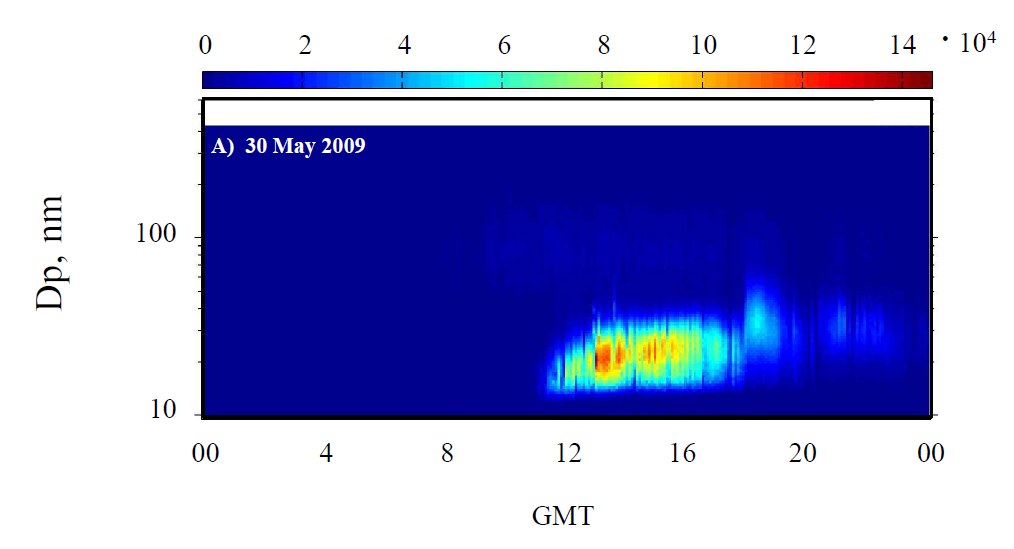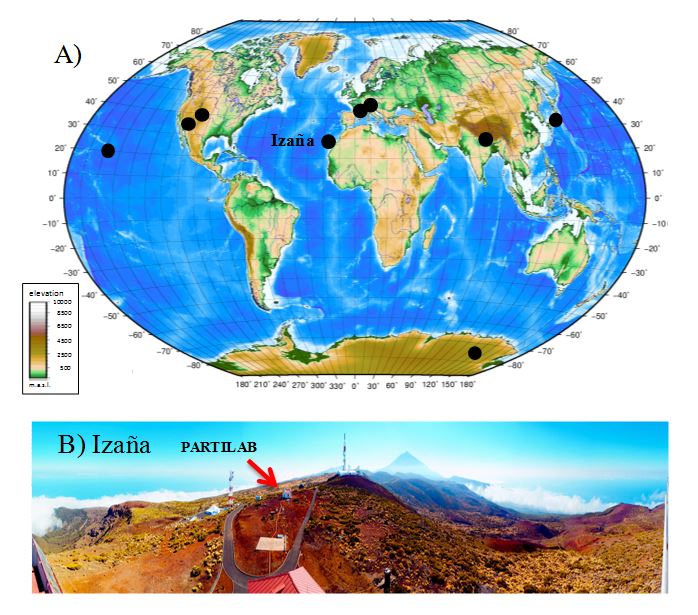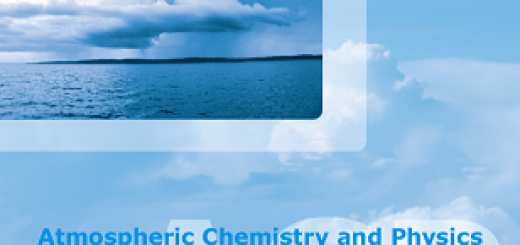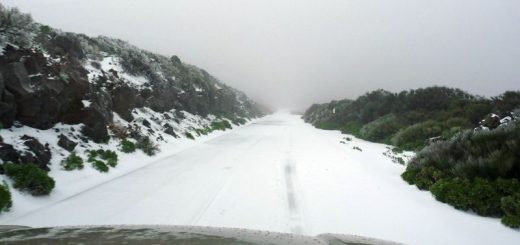The new article entitled “Climatology of new particle formation events in the subtropical North Atlantic free troposphere at Izaña GAW observatory” has been published in Atmospheric Chemistry and Physics Discussions.
![]()

![]()
Atmospheric Chemistry and Physics Discussions (ACPD) has published in the last volume a study performed by Scientists of the Atmospheric Research Centre of Izaña (IARC) entitled “Climatology of new particle formation events in the subtropical North Atlantic free troposphere at Izaña GAW observatory”. The paper is opened for public review and discussion until the 8th of November 2013.
The nucleation of gases is an important source of new particles or atmospheric aerosols. These particles are involved in some of the processes that influence the weather. For instance, they influence in the hydrological cycle, because they can act as cloud condensation nuclei (CCN). Moreover they scattered the solar radiation taking part in the Earth’s radiative balance. Despite the importance of the nucleation, there are still some uncertainties about determinate processes associated to the new particles formation. The last Intergovernmental Panel on Climate Change report (IPCC,2007) establishes the nucleation as a priority research line.
This new study presents a climatology of the New Particle Formation (NPF) Events in the North Atlantic free troposphere. Such events, in which new particle formation is produced followed by a growth (Fig.1), are described by their “Formation Rate” (FR) and their “Growth Rate” (GR).

Fig. 1. New Particle Formation Event example. The graph shows the time evolution of the size distribution. OY represents the geometric mean diameter and the colour bar the concentration for each size.
Studies of this characteristics, performed in high mountain sites in remote areas reaching the free troposphere, are scarce (Fig.2). There are 9 observatories from which only 4 of them (Izaña included) have a data set of more than one year. The data set includes particle size distributions (10–600 nm), reactive gases (SO2, NOx, O3), meteorological parameters (temperature, humidity, water vapour, wind speed, wind direction) and radiation (global, direct, diffuse, UV-B, UV-A) from June 2008 to June 2012.

Fig. 2. (A) Global map highlighting the location of Izaña and of other mountain observatories where studies on NPF have been performed. From West to East: Mauna Loa – Hawaii (3400ma.s.l.; Weber et al., 1995, 1999), Mt. Lemmon – Arizona (2700ma.s.l.; Shaw et al., 2007), Rocky Mountains – Colorado (2900ma.s.l.; Boy et al., 2008), Izaña – Tenerife (2367ma.s.l.; this study), Puy de Dôme – France (1465ma.s.l.; Venzac, 2009), Jungfraujoch – Swiss Alps (3580ma.s.l.; Boulon et al., 2010), Pyramide – Nepal (5079ma.s.l.; Venzac et al., 2008), Norikura – Japan (2770ma.s.l.; Nishita et al., 2008) and Dome C – Antarctica (3200ma.s.l.; Järvinen et al., 2013). (B) View of the PARTILAB (particles laboratory) from the Izaña observatory main building.
The events in which new particle formation took place with a subsequent growth lasting more than 4 hours, where described according to their formation and growth rates. In order to identify the parameters that influence on the NPF the context in which the episodes were produced was analyzed.
As a result, NPF events were observed in a 30% of the analyzed days (of a total of 1178), with a clear seasonality (with more events taking place from May to August). The formation and growth rates are quite similar to those found in the observatory of Mauna Loa in Hawaii (observatory placed in the Oceanic free troposphere, like the Izaña observatory) and much more lower than those found in another remote and urban places. The analysis shows than SO2 and solar UV radiation influence on this processes either during the nucleation step or during the formation step. The presence of Saharan dust in the free troposphere is associated with a decrease in the formation rates of new particles.
The reference of the article is:
García, M. I., Rodríguez, S., González, Y., and García, R. D.: Climatology of new particle formation events in the subtropical North Atlantic free troposphere at Izaña GAW observatory, Atmos. Chem. Phys. Discuss., 13, 24127-24169, doi:10.5194/acpd-13-24127-2013, 2013.
The article can be download at:
http://www.atmos-chem-phys-discuss.net/13/24127/2013/acpd-13-24127-2013.html







